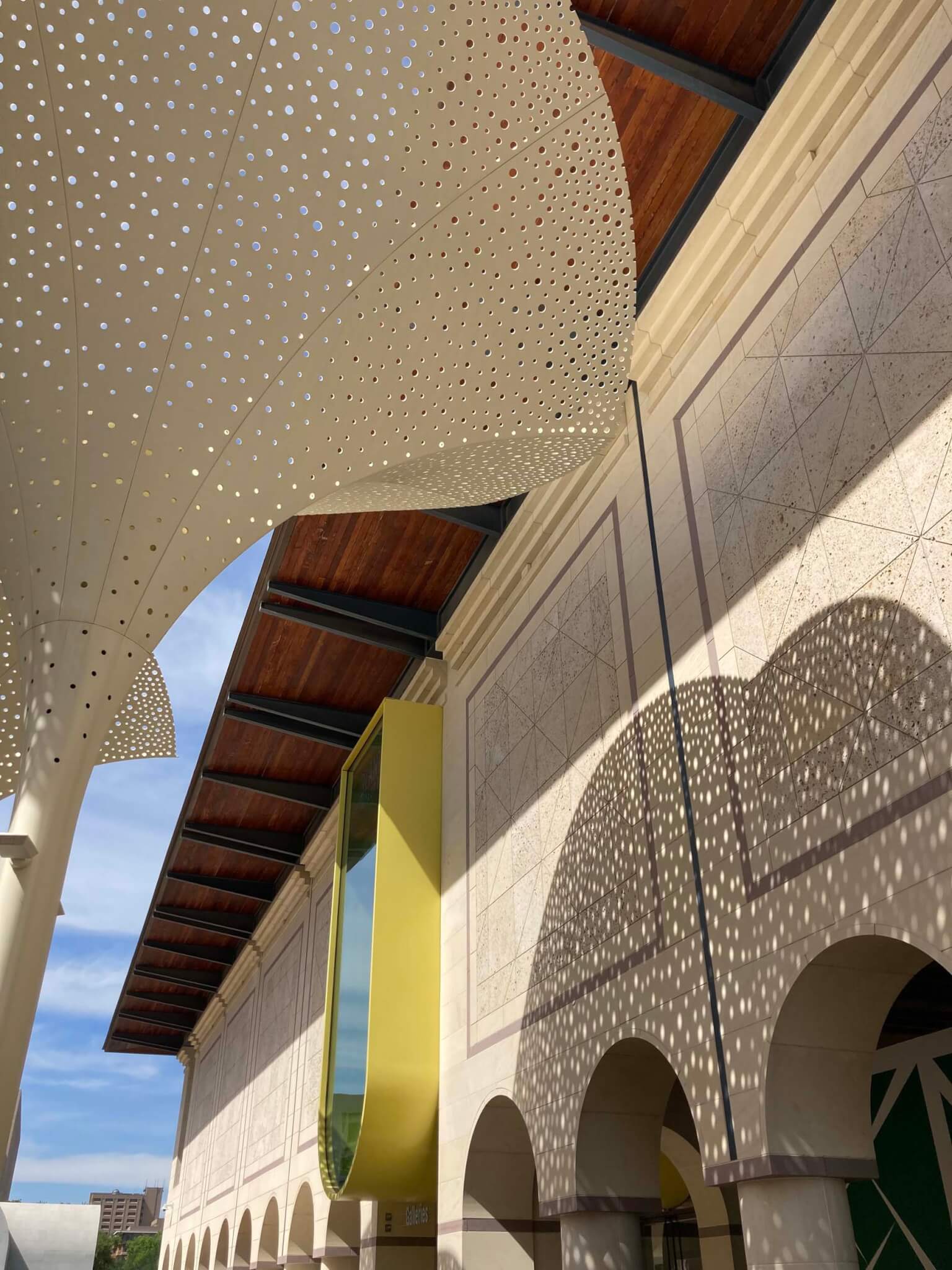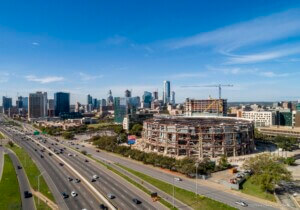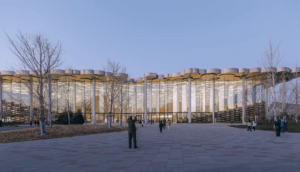Outside the University of Texas at Austin’s Blanton Museum of Art, 12 three-story-tall, fan-like pillars form a canopy that shades an expansive outdoor community space. Moody Patio, as the shade structure is called, is the primary addition of a Snøhetta-led renovation project which saw a revitalization of the museum’s grounds.
As previously reported by AN, the renovation to the Blanton was announced in 2021, with plans to “unify and revitalize” the museum campus, an expansive, 200,000-square-foot site housing two main buildings and Ellsworth Kelly’s chapel-like Austin. Blanton’s new grounds culminate the recently completed Texas Capitol Mall, a new pedestrian greenway that runs down Congress Avenue, connecting the Blanton with the Texas State Capitol Building.

Moody Patio is just one of several initiatives to place art outside of museum walls. In addition to Moody Patio, named for the Moody Foundation’s $20 million gift to the museum, there are several large scale artworks, including murals and a site-specific sound gallery.
“This is what we have been waiting for: the opening of a new gathering place for Austin that offers a different way to experience the Blanton,” museum director Simone Wicha said in a press release. “I cannot wait for visitors to stroll along the pathways, pass under the stunning shade canopy, explore the powerful, immersive new artworks, and enjoy performances on the Moody Patio’s outdoor stages.”
The shade canopy is sited within the reimagined landscape. Between the towering sculpture-like shade structures are winding paths linking the museum to the city, as well as a series of public stages, organic-shaped benches and other seating, and new plantings, of which 95 percent are native to Texas. The perforated petals forming the pillars act as shading devices, while also serving as a rainwater collection system for the native foliage around the pathways.

Over each of the two main entrances to the museum Snøhetta has inserted a large “vault” conceived as an inverted form of the rounded arches lining the loggia of the building. Painted bright yellow, the intervention stands out against the beige backdrop of the museum, matching the yellow-hued check-in entrance. Those inside the volume can look out to the revamped patio while seated on a staircase that occupies the enclosed space.
“Snøhetta’s design expands the museum’s world-class art collection beyond the museum’s galleries and creates a highly visible public place of—and for—the arts and Austin,” said Craig Dykers, founding partner of Snøhetta and an alumnus of the UT School of Architecture.

Spanning the wall behind the loggia is a mural by the late Cuban American artist Carmen Herrera. Verde que te quiero verde (Green How I Desire You Green) is the artist’s first public mural commission. Just east of the Kelly’s chapel-like work is the new Butler Sound Gallery, the first of its kind at a major American museum. As previously reported by AN, the inaugural commission for the sound galley is an installation from composer and sound art pioneer Bill Fontana, who has pulled from the ecology of Texas Hill Country to bring the sounds of wildlife to Austin.

Other new art commissions include a billboard-like mural from Kay Rosen, and a rainbow-colored embroidered installation by Gabriel Dawe in the new visitor check-in lobby. The new grounds and all exhibits are now open to the public.











